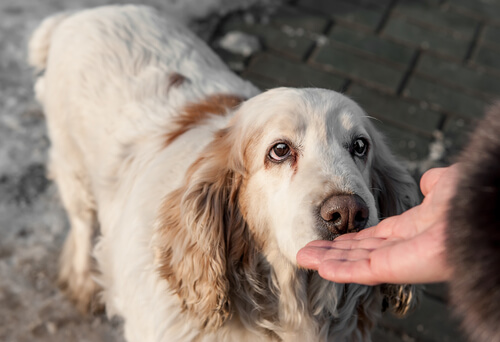Types of Cancer That a Dog Can Detect

Dogs never stop surprising us. These animals have proven to be the best friend a man could have. In addition to serving as a companion, a dog can help detect bombs, drugs and missing persons. And now: also cancer.
In the pedagogical field, they have proven to be excellent classroom assistants for young children. They have helped with tasks such as improving reading. At the therapeutic level, their work with children with Down Syndrome or Autism is also outstanding.
Help against cancer

In the field of health, when properly trained, they have become the best alert for people with epilepsy or diabetes. And also they are also very effective as cancer detectors.
There are several dogs that have helped their owners with cancer detection.
Undoubtedly, what has further enhanced the “medical legend” of dogs is also its proven ability to detect the presence of various types of cancer in the human body.
The first case occured in the United Kingdom in the late 1980s. A woman went to the doctor after her Borden Collie insisted. It was about a mole that appeared on one of her legs. A dermatologist had already evaluated the spot. The doctor initially classified it as benign. But, it would end up being an early stage melanoma. Had they not discovered it at that precise moment, it would have been life-threatening.
How they do it
The answer to the question of how dogs can detect the presence of cancer and malignant tumors in people’s bodies is in their noses, which house 300 million olfactory receptors.
When trained for this purpose, they can identify variations imperceptible to the human nose (which only has 5 million olfactory receptors). And they do it with a precision equal to detecting a drop of blood in two Olympic swimming pools.
They even have the capacity to notice the presence of the disease when it is in its “zero” stage. That is a stage when none of the traditional methods are capable of doing this.
What they detect are Volatile Organic Compounds (VOC). That is, small particles produced by malignant bodies that spread throughout the body.
Types of cancer that they can detect
- Prostate: The most frequent cancer in men, with 21.3% of all cases. It is detected by dogs through urine with an accuracy that ranges between 93% and 95%. In the United Kingdom, the Medical Detection Dogs Foundation uses these animals to identify “false positives” that are often produced by the traditional test that is used to dismiss this pathology.
- Ovaries: When detected in its initial stage, the survival rate for this cancer is 90%. The main difficulty is that more than 60% of cases are diagnosed when it is already very advanced and has spread. One of the factors that hinders its rapid identification is that all of its symptoms, such as constipation or inflammation, are associated with other conditions. However, through urine, dogs alert us about the formation of a tumor.
- Lungs: When smelling a patient’s breath, the effectiveness index of many of the dogs trained to “smell” lung cancer reaches 100%.
- Skin: We already commented that the first “official anecdote” regarding dogs’ capacity to identify this terrible disease was with an incipient melanoma. In this case, animals are trained to perceive the stench that directly issues from each patient’s body.
- Colon, kidney and intestines: With an effectiveness that exceeds 98%, the presence of tumors in these three organs is detected from the breath of sick people or through their excrement.
There are also studies that support the effectiveness of dogs trained to detect breast and bladder cancer.

Training
Breeds like labradors have a natural inclination to hunt for and detect odors and are the most used. But specialists maintain that any dog can learn to warn of the disease’s presence.
Depending on which organ is in danger, the volatile particles have a unique smell. That is why dogs receive specific training. In the same way as when they are trained for security tasks, positive reinforcement (treats) is used to train these health agents.
